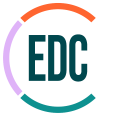Access Sonoma Broadband

Overview
It has become impossible to lead one’s life, or conduct one’s business without adequate broadband access. Throughout the world broadband is becoming recognized not as a luxury, but instead - a necessity.
Unfortunately, rural and low income communities, as well as communities of color across the nation face economic disenfranchisement and strained economies due to inadequate broadband access. To address this challenge, the Sonoma County Economic Development Board has formed Access Sonoma Broadband (ASB) to work with communities to close the digital divide through infrastructure design/deployment, access, and affordability, and implementing digital equity.
Mission
The mission of Access Sonoma Broadband is to close the digital divide, by connecting Sonoma County's unserved and underserved communities to fast, affordable, and reliable internet services.
Access Sonoma Broadband Action Plan

On June 8, 2021, the Sonoma County Board of Supervisors approved the Access Sonoma Broadband Action Plan. The purpose of the plan is to explore the creation of a publicly governed broadband entity. This entity could deploy, own, and manage broadband infrastructure within Sonoma County, reducing the cost barriers for broadband providers, and closing the regional digital divide.
Access Sonoma Broadband Action Plan (PDF: 2.97 MB)
Plan De Acción Para Acceso Sonoma Banda Ancha (PDF: 3.86 MB)
Initiatives
Infrastructure Design and Deployment
- In the fall of 2022 the County of Sonoma, in partnership with Golden State Connect Authority, applied for and received a $499,554 grant from the California Public Utilities Commission’s Local Agency Technical Assistance grant program. The funding is planned to provide a refined high-level broadband network design for unincorporated areas with little or no internet service and low-level, construction-ready design for priority areas. The scope of work for this grant program is anticipated to be completed within 18 months of the grant award (June 2024).
Access and Affordability
- To further broadband accessibility and advanced adoption, the EDB has been awarded a $300,000 grant from the Federal Communications Commission (FCC) Affordable Connectivity Program (ACP). The grant is intended to be used to drive awareness and enrollment in the largest broadband affordability program in the nation’s history. Building upon current community partnerships, the FCC has issued grants to support partner organizations nationwide to serve as trusted community messengers about the ACP and to better equip agencies with funding to pursue innovative outreach strategies to reach historically unserved and underserved communities. Visit Internet for All Now to learn more about ACP, find out if you’re eligible, and apply today.
Digital Equity
- It has become impossible to lead one’s life, or conduct one’s business without adequate broadband access. Throughout the world broadband is becoming recognized not as a luxury, but instead - a necessity.
- Unfortunately, un- and underserved communities across the nation face significant challenges due to inadequate broadband access. Lack of adequate broadband service is an issue that affects health, education, economic success, and overall quality of life. Closing the digital divide is a priority for Sonoma County.
Broadband Mapping Tools
Access Sonoma Braodband Mapping Tool
The Broadband Mapping Tool may be used as a tool among internet service providers and other entities to assist with broadband deployment projects and grant applications. The map is constantly evolving with new data and information relevant to the Sonoma County region and of potential interest to the telecommunications industry. Please feel free to contact staff with any suggestions on how to improve the mapping tool to benefit your needs.
California Public Utilities Commission (CPUC) Interactive Broadband Map
This map is intended to help state and local agencies with broadband deployment and adoption programs. It contains information on broadband speeds and available services, California Advanced Services Fund (CASF) eligibility, and more. For more information on this mapping tool visit the CPUC Interactive Broadband Map webpage.
CPUC Interactive Broadband Map>>
California Public Utilities Commission (CPUC) Federal Funding Account (FFA) Public Map
Shows eligible unserved locations as well as socioeconomic data and may be used by grant applicants to plan last mile broadband project grant proposals for the Federal Funding Account. For more information, visit the CPUC FFA Public Map webpage.
Federal Communications Commission (FCC) National Broadband Map
Provides broadband service speeds and availability data at the household level for the United States, as reported by internet service providers (ISPs). Individuals and organizations can challenge the information on this map to improve accuracy. For more information and instructions on how to help improve the map, visit the “About” section on the map.
Digital Divide in Sonoma County
Communities
As technology evolves and our demand for internet bandwidth increases, existing broadband infrastructure has become outdated in many low density communities and is not able to support their current demand for bandwidth. Fortunately, there are state and federal grant programs that fund broadband infrastructure deployment in unserved and underserved communities that do not have access to high speed internet, defined in California as services capable of providing a minimum speed threshold of 6 megabits per second download and 1 megabit per second upload. To see if you may qualify for funding opportunities, please run a speed test at: https://www.speedtest.net/.
You may also visit the California Interactive Broadband Map to view the current status of connectivity throughout California that identifies areas that may be eligible for grant funding. https://www.broadbandmap.ca.gov/
Education
It is imperative that students have access to fast, reliable, and affordable internet services and technology in order to complete school assignments remotely at home and at school. The Sonoma County Office of Education works diligently to ensure all school districts have access to high speed internet. These efforts involve partnerships with internet service providers and with Corporation for Education Network Initiatives in California (CENIC). For more information on current connectivity throughout Sonoma County’s school districts, please visit: https://datalink.k12hsn.org/listing/49
Communication
Reliable communication is absolutely necessary for individuals to stay alert of emergencies in Sonoma County. Sonoma County staff proactively work with cellular providers on improving cellular service throughout the County, exploring opportunities to deploy infrastructure in areas lacking cellular coverage, upgrade antiquated and failing landline systems, and create overall redundancy in our networks to ensure communities have access to reliable and resilient communications during emergencies and natural disasters. To view current cellular coverage in your community, please access the following links to view providers’ cellular coverage throughout Sonoma County:
AT&T: https://www.att.com/maps/wireless-coverage.html
Verizon Wireless: https://www.verizonwireless.com/reusable-content/landing-page/
T-Mobile: https://www.t-mobile.com/coverage/coverage-map
Low-Income Offerings
Some internet service providers in Sonoma County provide a low-income internet service offering to eligible households. Please click on the links below to learn more information and if your household qualifies.
Comcast Internet Essentials Program: https://www.internetessentials.com/
AT&T Access Program: https://www.att.com/internet/access/
Frontier Communications Discount Programs: https://frontier.com/resources/discount-programs
North Bay North Coast Broadband Consortium (NBNCBC)
In 2007, the California Public Utilities Commission (CPUC) authorized the California Advanced Services Fund (CASF) to provide grants to bridge the “digital divide” in unserved and underserved areas of the state. In 2010, CASF was expanded into three accounts, and one of those accounts became the “Rural and Urban Regional Broadband Consortia Account” whose intended purpose, pursuant to AB 1665, is to facilitate the deployment of broadband services by assisting infrastructure grant applicants in the project development or grant application process. More information about the CASF grant program and these regional consortiums can be found on the CPUC website.
In 2014, the North Bay North Coast Broadband Consortium received grant funding from the Rural and Urban Regional Broadband Consortia Account to create a 4 member county broadband consortium in partnership with Mendocino, Marin, Napa, and Sonoma counties. NBNCBC still remains operational today and its current efforts focus on assisting internet service providers apply to broadband infrastructure grant programs for deployment projects in unserved areas, as well as advocacy for broadband related legislation. There are several reasons why we believe participating in a regional consortium is beneficial:
- The rural areas of all four counties have a great deal in common: low population density, agriculture, tourism, geographical challenges to broadband deployment, and the resulting urban/rural digital divide
- Broadband connectivity does not stop at county lines, and coordinating county planning reduces capital expenses to deploy broadband.
- Regional broadband deployment also encourages network redundancy and improves reliability, which reduces broadband outages due to network damage.
- Regional cooperation also reduces costs to any one county by a sharing of resources, (such as GIS mapping, expertise, and information) and developing regional projects.
How You Can Help
The California Public Utilities Commission maintains the State Broadband Coverage Map which identifies coverage areas. Currently this data is self-reported by carriers to the Federal Communication Commission’s Form 477 which has been determined to misrepresent the actual availability of broadband through the United States. By verifying the actual services available at your home or in your community, you will be confirming or refuting carrier supplied information and helping the CPUC provide a more accurate description of coverage in California. This confirmation process is known as ground proofing and allows communities to pursue broadband infrastructure grant funding if determined unserved and eligible.
Take the CPUC Broadband Survey
The information you provide by completing the survey will be incorporated into the consumer feedback layer, and be used to validate or invalidate provider's service availability information.
The CPUC has two ways for you to provide survey feedback data:
- Mail-in the paper survey: Simply complete, sign, and mail via US Mail to the address at the bottom of the survey.
- Take the online survey: You can complete this survey from any place with internet service if you don't have service at your house
- Click on the " Interactive Broadband Map"
- Select the House icon, at the top on the right side of the map. This is the "Address Lookup" tool.
- Enter your physical address, city, state and zip code, and click "Locate"
- A box with service providers in your area appears, and directly above it you will see the link 'Send Feedback.' Click this link and the survey will appear on your screen. Answer the questions and submit the survey.
Download CalSPEED
You can download the CalSPEED mobile testing app and test the quality of the service available at your location at that moment. Tests done in areas with no service will be reported to the CPUC automatically the next time you enter an area with service. If you have some service available, testing must be done while connected to your Wi-Fi or mobile data at home. Please feel free to use the app frequently, at a variety of locations outside of your home as well.
Write to the CPUC
The California Public Utilities Commission welcomes your comments. Please send your correspondence to CPUC Broadband Feedback or:
California Public Utilities Commission
505 Van Ness Ave.
San Francisco CA 94102

 Translate
Translate